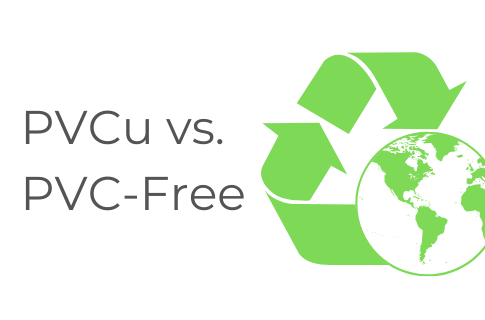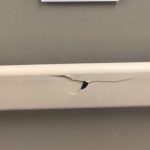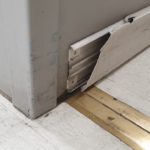
Is it really Green? An insight into PVCu vs. PVC-free wall protection options
It is important to use products that are environmentally friendly in your projects, to reduce emissions and landfill waste that is so prevalent in today’s society. The final environmental impact can be vastly different from product to product.
Roly Geyer from SSIR puts it very well in his article “There is No Such Thing As a Green Product,” highlighting the importance of assessing the ‘net impact’ in the environment from product to product, by increasing the overall lifespan of the product.
PVCu as a material is generally frowned upon for use in building products, but what is commonly overlooked is the difference in the lifetime of PVCu based materials compared to PVC-free alternatives such as PETG plastics.
Learn More about Acculines PVC-free G2 Bioblend material option
Does All PVCu contain phthalates?
No. Not all PVCu contains phthalates. It is typically only present in soft PVC’s rather than rigid vinyl materials, used in door & wall protection.
Phthalates are the bad guys in the PVCu camp. They are chemicals used to soften or plasticize PVCu products, which through use can be released into the air, harming the environment and humans. The free radical phthalates cling to dust and can then be breathed in by humans.
Does PVC-free material last as long as PVCu based polymers?
No. PVC-free material such as PETG plastic is more susceptible to breakdown and degrade than PVCu based materials. Even in an interior temperature controlled environment such as a hospital, typically after 5-10 years, PVC-free product will become brittle and shatter upon impact. That’s why Acculine offer a 25 year durability warranty on its Inpro Palladium PVCu based material range; not on the Inpro G2-BioBlend options.
Taking into account the lifetime suitability of the product, PVCu based materials such as the Inpro Palladium Rigid Vinyl products, are less likely to end up as landfill and hence have lower ‘net impact’ on the environment.
All Inpro Palladium product range has been independently Greengard certified to gold standard, as per UL 2818 – 2013 Gold Standard for Chemical Emmissions for Building Materials, Finishes and Furnishings.
Contact us for a copy of the certificates.


